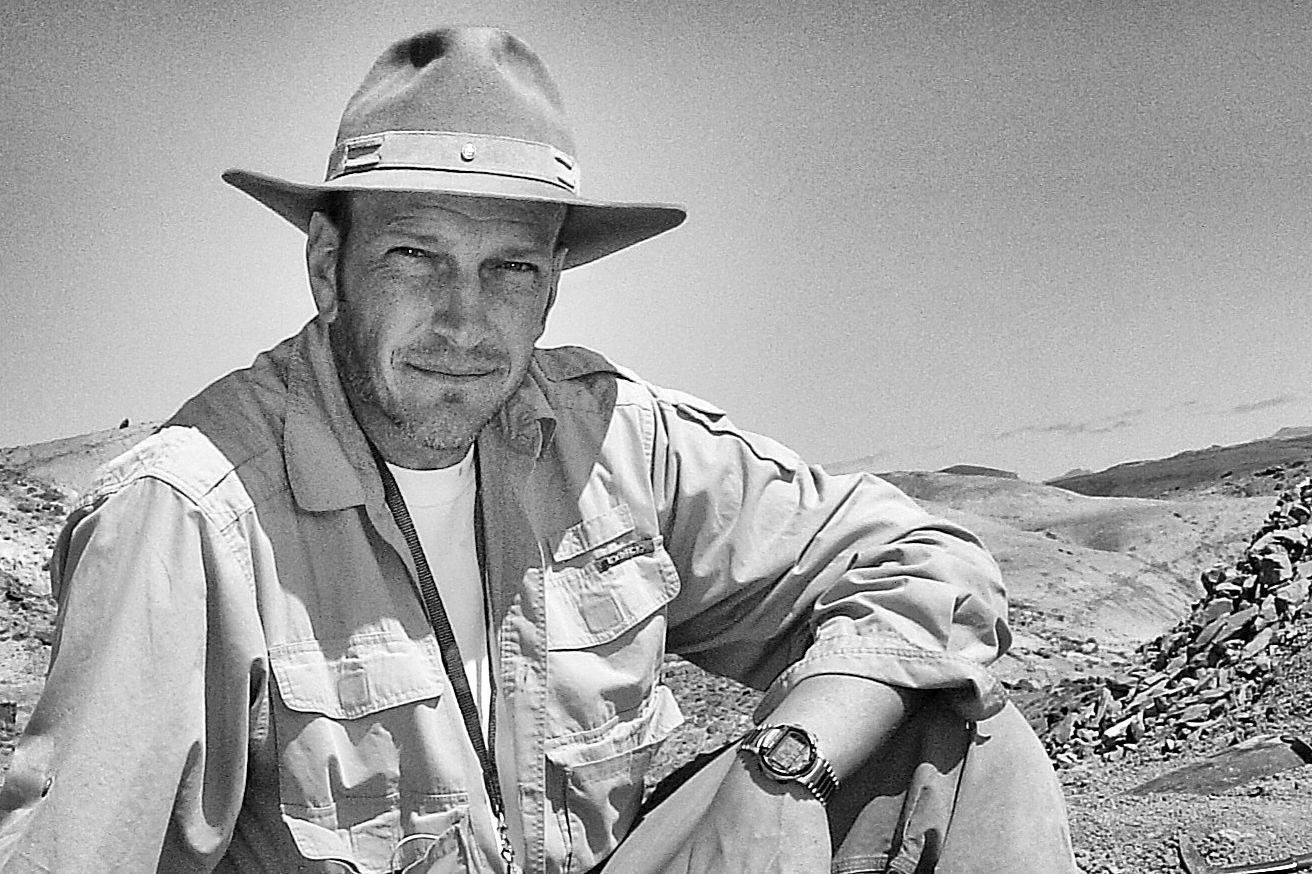Sarasota Climate Conference Emphasizes Opportunities in a Growing Crisis
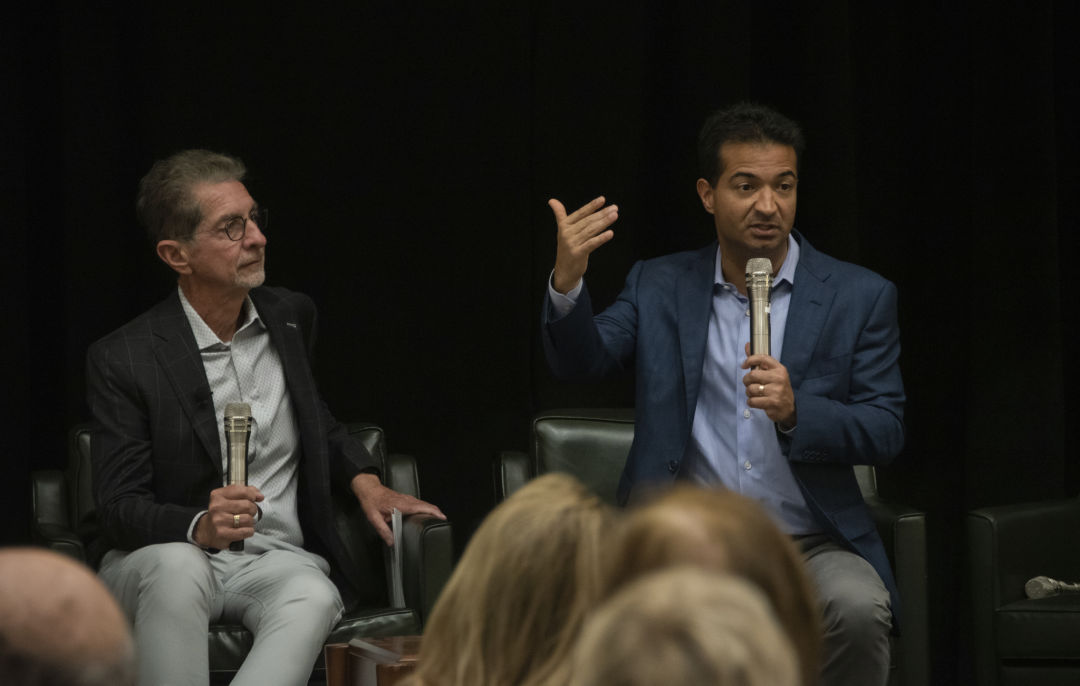
Bob Bunting, left, founder and director of the Sarasota Climate Conference, and Carlos Curbelo, former Representative for Florida’s 26th Congressional District, speaking at the third annual climate conference in Sarasota.
At last Thursday’s climate conference, Sarasota's Climate Adaptation Center brought together what might initially seem like a strange group of people: key business leaders, a paleontologist, scientists, an insurance innovator, finance leaders, academics and philanthropists. The topic of the day? "The Triple Threat of Water."
The conference showed that community is crucial for adapting to and mitigating climate crises, which require us to work together and learn from each other to secure a livable future in which we all can thrive. Every past success with climate issues—like the continued elimination of ozone-depleting substances through the Montreal Protocol, which has resulted in the ozone hole getting smaller over time—has come from this kind of communal decision-making. And within every talk or panel discussion at the conference, now in its third year, the phrase "we need to work together" was used.
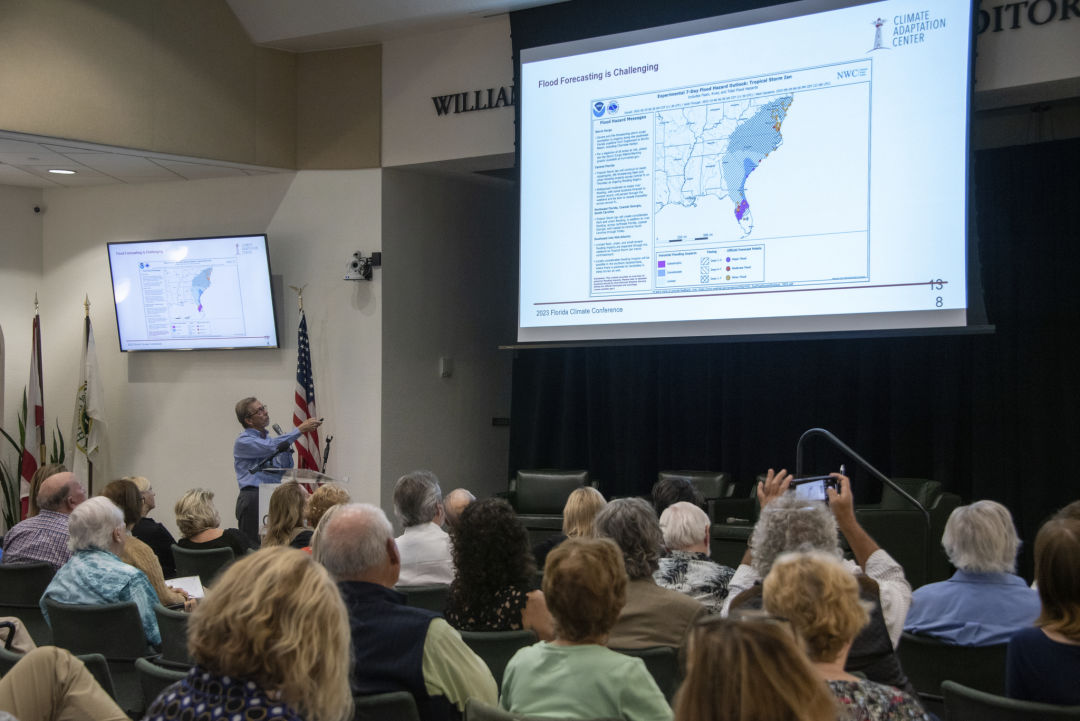
Stuart Waterman, the Chief Technology Officer for the Climate Adaptation Center, presents some key findings and projections for Florida and our area.
The main theme of the day: opportunities abound, from innovations in insurance and academia to the ability for business leaders to profit while also protecting the most vulnerable among us. While a single-day event doesn’t solve every challenge we face when it comes to the climate crisis, there was a sense of possibility in the air.
Often, the public discussion around the overheating of the planet can leave us with a sense of overwhelm. When facing climate catastrophes, how can we do anything but cower, avoid and deny? However, there is a way through, as well as a way to find a sense of agency within the urgency. The conference exhibited what that might look like. Here are some key takeaways.
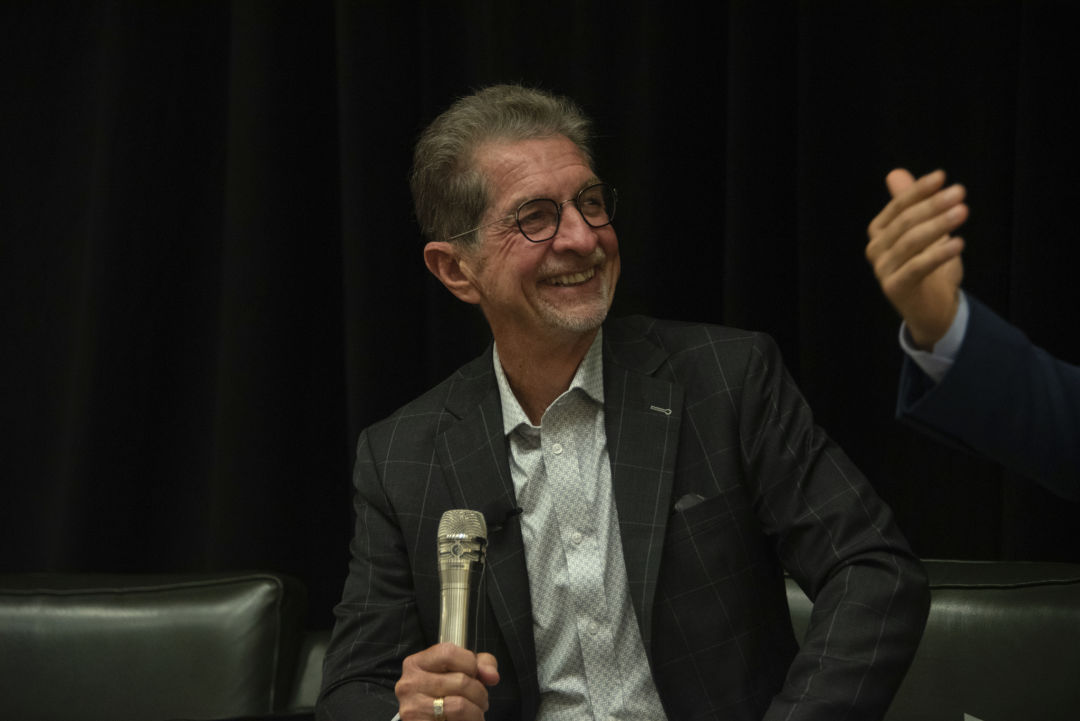
Bob Bunting noted at the close of the conference that, "Optimism is a powerful tonic. We have to be optimistic to solve this problem."
The Bad News
The climate has already changed.
It is no longer static or stable. We need to deal with the fact that climate change is here. Plus, extreme climate events have doubled—and will do so again by 2050.
We're going to overshoot the safe zone for climate overheating.
An increase of 1.5 degrees globally is considered a safe zone—and yet, based on current numbers, we’re going to overshoot that and reach a 2-degree increase by 2050 (which is why the extreme climate events are going to double again).
Nothing is going to stop the local impacts we'll see in 2050.
Between now and 2050, we’re not going to slow this down. What we do today will be realized in 2050—in other words, there’s a lag in the impacts of our behavior. "That’s the difference between climate and weather," Bunting explains.
The response in every sector has been too slow.
Local climate has changed, too, and we need both mitigation and adaptation strategies to deal with those changes proactively instead of retroactively.
What We Can Do Right Now
Change the building codes with 2050 in mind.
Current building codes are based on climate and weather expectations of the 1990s. Instead of basing those codes on the past, basing them on what we know we can expect from the future will help local communities prepare for the change.
Take advantage of tax credits both at home as well as in manufacturing.
The Inflation Reduction Act offers tax credits for green building—and we can take advantage of them. Entrepreneurs can get ahead of the curve, since change breeds new demands for safer and climate-considered housing.
Increase philanthropic focus on climate.
Philanthropist Elizabeth Moore described the losses to her Myakka ranch due to flooding during Hurricane Ian. The takeaway from the conference: shift climate-related giving from 2 percent to 10 percent.
"Climate screen" all projects.
Every sector needs to screen its projects for potential climate vulnerabilities to inform their decision-making. This will avoid partial solutions and create more robust and longer-lasting projects.
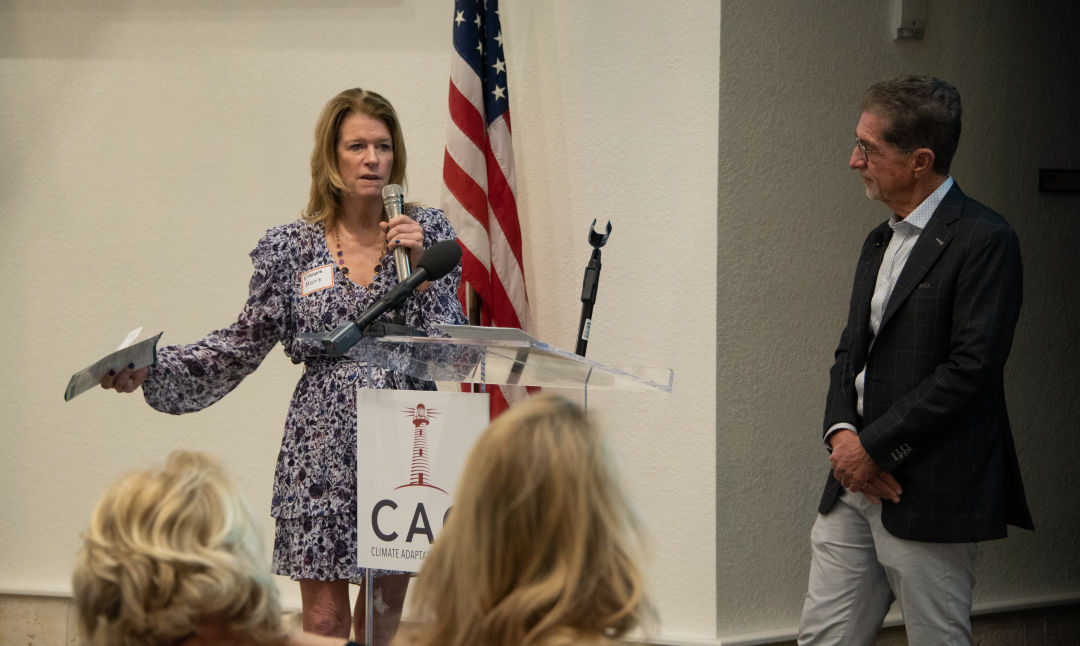
Philanthropist Elizabeth Moore described the losses to her ranch in Myakka due to flooding during Hurricane Ian as well as the need to increase philanthropic focus on climate funding.
Here's How These Insights Can Translate Locally
- Knowing your elevation is crucial to surviving the next hurricane as well as knowing how to better prepare for the risks associated with your property.
- The road connecting the Ringling Causeway to the new Gulfstream roundabout was not raised during the project, which means this essential evacuation route will be underwater during storm surges and potentially unpassable for most cars.
- Is the plan for the new Sarasota Performing Arts Center considering the sea level rise we’ll have by 2050—or are those targets matching the old 1990 codes?
- Designated garages to house cars during evacuations. More than 350,000 cars were lost during Hurricane Ian. Without proactive measures, such as designated spaces to park cars, those who live on barrier islands will need to relocate their vehicles along with themselves during a storm.
- Businesses and homeowners can consider using paint that reflects heat. This is not only a mitigation strategy, it's an adaptation strategy. Heat-reflective house paint can reduce the impact of the hottest days that we're going to see.
"It's all about movement and traction—moving our energy into the solution instead of complaining and denying it," Bunting says. "We have to decide this is an opportunity to lower risk and make money. We have to be greedy."
To get involved with the Climate Adaptation Center you can become a member or visit their site to learn more about what you can do. theclimateadaptationcenter.org
